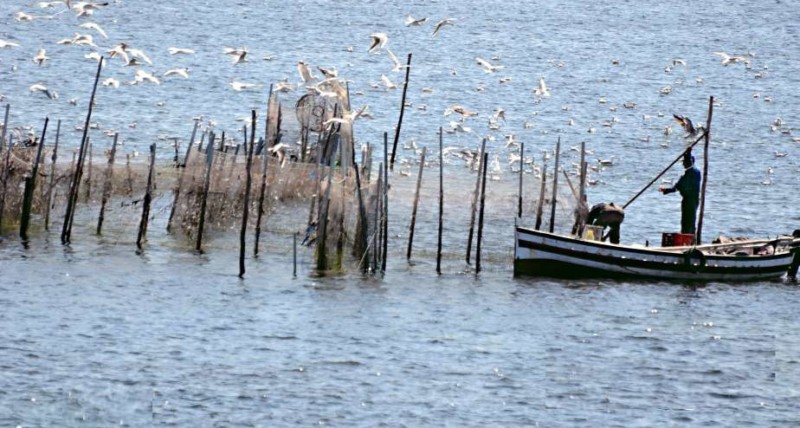As temperatures in Africa rise slightly above the global average, the continent is increasingly burdened by the impacts of climate change and faces disproportionate costs for essential climate adaptation, according to a United Nations agency on Monday.
On average, African countries are losing 2 to 5% of their GDP, with many allocating up to 9% of their budgets to combating extreme weather events.
According to the World Meteorological Organization (WMO), the cost of adaptation in Sub-Saharan Africa is estimated to be between $30 and $50 billion per year over the next decade, equivalent to 2 to 3% of the region’s GDP.
Investment in Adaptation and Resilience
By 2030, up to 118 million extremely poor people (living on less than $1.90 per day) will be exposed to drought, floods, and extreme heat in Africa if adequate adaptation measures are not implemented. This will place an additional burden on poverty alleviation efforts, as highlighted in the report « State of the Climate in Africa 2023. »
Climate-resilient development in Africa requires investments in hydrometeorological infrastructure and early warning systems to prepare for the increasing frequency of high-impact hazardous events.
« The 2023 State of the Climate in Africa report underscores the urgency of investing in meteorological services and early warning systems to facilitate climate adaptation and enhance resilience in Africa. As the effects of climate change continue to manifest globally, the African continent stands at a critical crossroads, » said Josefa Leonel Correia Sacko, Commissioner for Agriculture and Sustainable Environment at the African Union Commission, in a statement.
This Situation Worsens an Already Alarming Humanitarian Crisis
These developments come as Africa remains highly vulnerable to climate change, despite contributing only about 4% to global greenhouse gas emissions.
The report notes that the rate of sea level rise around Africa was close to or slightly above the global average of 3.4 mm per year, with the highest rate observed in the Red Sea, reaching 4.1 mm per year.
Moreover, 2023 was one of the three hottest years in Africa in the past 124 years. The continent has been warming at a slightly faster rate than the global average, with an increase of approximately +0.3°C per decade between 1991 and 2023. The average temperature was 0.61°C above the 1991-2020 average and 1.23°C above the long-term average from 1961-1990.
« Over the past 60 years, Africa has observed a warming trend faster than the global average. In 2023, the continent experienced deadly heatwaves, heavy rains, floods, tropical cyclones, and prolonged droughts, exacerbating an already desperate humanitarian crisis, » said Celeste Saulo, Secretary-General of the WMO.
Multi-Year Droughts in Northwest Africa
According to the WMO, the highest temperature anomalies in 2023 were recorded in Northwest Africa, particularly in Morocco, the coastal regions of Mauritania, and Northwest Algeria. Tunis, the capital of Tunisia, reached a record high of 49.0°C, and Agadir, Morocco, set a new maximum temperature record of 50.4°C.
Several countries, including Mali, Morocco, the United Republic of Tanzania, and Uganda, recorded their hottest year on record. Extreme heatwaves in July and August affected North Africa.
Parts of Morocco, Algeria, Tunisia, Nigeria, Cameroon, Ethiopia, Madagascar, Angola, Zambia, Zimbabwe, and the Democratic Republic of Congo experienced severe drought in 2023. Zambia faced its worst drought in 40 years, affecting eight out of ten provinces and approximately six million people.
Extreme Flooding
While some regions experienced marked rainfall deficits, including the western part of North Africa and Northwest Africa, the Horn of Africa, and parts of Southern Africa—such as Zambia, Zimbabwe, Botswana, and much of Namibia—other areas saw significantly above-normal precipitation. These included Angola and coastal regions north of the Gulf of Guinea.
Significant and widespread flooding affected parts of Kenya, Somalia, and Ethiopia, resulting in over 350 deaths and 2.4 million people displaced during the April to June rainy season.
At least 4,700 confirmed deaths in Libya were attributed to flooding following Mediterranean cyclone « Storm Daniel » in September, with 8,000 people still missing.
In Mozambique, 165 additional deaths were reported.
In September and October, around 300,000 people were affected by flooding in 10 countries, with Niger, Benin, Ghana, and Nigeria being the hardest hit.
Climate Impacts on Agriculture and Food Security
More broadly, extreme weather events, including floods and droughts, had a major impact on food security.
North Africa’s cereal production in 2023 was about 10% below the five-year average, estimated at 33 million tons in 2023, similar to the previous year’s drought-affected harvest.
Irregular rainfall and the overall security situation kept cereal production below average in the northern parts of the sub-region, particularly in Sudan, South Sudan, Uganda’s Karamoja region, Eritrea, Ethiopia, and central and western Kenya.
Source: ONU Info




